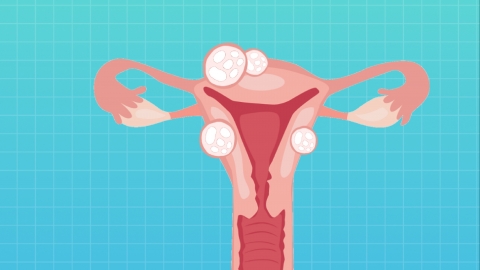What are the symptoms of uterine fibroids?
Generally, symptoms of uterine fibroids may include menstrual changes, abdominal masses, pain, pressure symptoms, and abnormal vaginal discharge. If these symptoms occur, it is recommended to seek medical attention promptly, clarify the condition, and follow medical advice for treatment. Detailed analysis is as follows:
1. Menstrual Changes
Intramural and submucosal fibroids can increase the surface area of the uterine cavity and endometrium, and affect uterine contractions, leading to increased menstrual flow and prolonged menstruation. Increased menstrual flow is characterized by significantly more bleeding than previously experienced, and severe cases may involve the passage of large blood clots. Prolonged menstruation refers to menstrual periods lasting longer than seven days, with some patients experiencing slight spotting even after their periods end.
2. Abdominal Mass
As uterine fibroids grow larger and the uterus exceeds the size of a three-month pregnancy, patients may feel a mass in the lower abdomen. The mass is usually located in the midline of the lower abdomen, is firm in texture, regular in shape, smooth on the surface, and clearly demarcated. It becomes more noticeable when the bladder is full in the morning because a full bladder pushes the uterus upward, making the mass easier to palpate.

3. Pain
Most patients with uterine fibroids do not experience significant pain. However, when red degeneration of the fibroid occurs, acute severe lower abdominal pain develops suddenly, often accompanied by fever, nausea, and vomiting. The pain intensifies significantly upon abdominal palpation. Red degeneration commonly occurs during pregnancy or the postpartum period and results from rupture of small blood vessels within the fibroid, thrombosis, hemolysis, and subsequent ischemic necrosis of the fibroid tissue.
4. Pressure Symptoms
Depending on the location and size of the fibroid, different pressure symptoms may occur on surrounding organs. Fibroids located in the lower segment of the anterior uterine wall can compress the bladder, causing symptoms such as frequent and urgent urination—manifested as increased frequency of urination, a constant sensation of needing to urinate, and small urine volumes each time. If the fibroid is large and causes significant compression, it may lead to difficulty in urination, urinary retention (inability to pass urine smoothly, with urine accumulating in the bladder).
5. Abnormal Vaginal Discharge
Intramural fibroids increase the surface area of the uterine cavity and stimulate increased secretion from the endometrial glands. Additionally, fibroids may affect secretion from the cervical glands, resulting in increased vaginal discharge. The discharge is typically white, thin, mucus-like or resembling egg white, and odorless. If a submucosal fibroid prolapses into the vagina, its surface can be easily irritated and infected, leading to purulent vaginal discharge with an unpleasant odor. If the fibroid undergoes necrosis or ulceration, large amounts of pus-like bloody discharge and tissue resembling decayed meat may be expelled, with a significantly increased foul odor.
In daily life, maintaining regular sleep patterns, avoiding excessive fatigue, practicing good personal hygiene, and reducing intake of spicy and irritating foods can help reduce the occurrence of fibroid-related discomfort.









